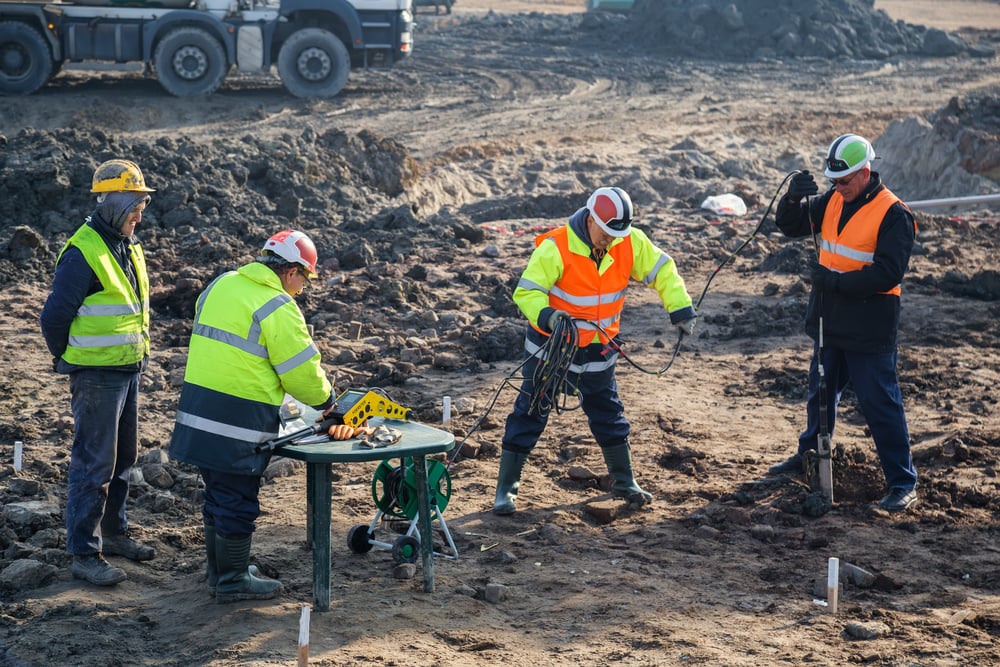Geotechnical Engineering For Construction Projects Things To Know Before You Buy
Geotechnical Engineering For Construction Projects Things To Know Before You Buy
Blog Article
Getting The Geotechnical Engineering For Construction Projects To Work
Table of ContentsNot known Details About Geotechnical Engineering For Construction Projects The Best Guide To Geotechnical Engineering For Construction ProjectsThe Ultimate Guide To Geotechnical Engineering For Construction ProjectsIndicators on Geotechnical Engineering For Construction Projects You Should KnowEverything about Geotechnical Engineering For Construction ProjectsGeotechnical Engineering For Construction Projects for Beginners
These functions need to be examined by geotechnical engineers to forecast their movements under numerous conditions., making this analysis essential., in enhancement to how they engage with building and constructions that have actually been set up on or within them, is one of the primary descriptions for why geotechnical design is crucial.
In enhancement to structural planning and building and construction, geotechnical engineering is also essential to the restoration and upkeep of pre-existing structures. Age-related destruction or extra troubles could influence a structure's stability and effectiveness. Environmental defense is achieved through geotechnical engineering. Expertise in air, water, and soil top quality maintenance is placed to use by geotechnical designers to lessen the negative effects of projects.
Framework growth, offshore engineering, tunnel building and construction, and deep foundations. Risk-based layout and multidisciplinary groups. These components will certainly keep the area progressing and guarantee its ongoing significance in the years to come. To summarize, geotechnical design is an important discipline that preserves the resilience and integrity of civil infrastructure. Geotechnical designers add to making structure jobs efficient all over the world by understanding the behavior of planet materials and applying proper planning techniques.
Not known Facts About Geotechnical Engineering For Construction Projects
The fundamental stability of any kind of project is critical. Geotechnical engineering plays a vital duty in making certain that structures are constructed on solid ground, actually and figuratively. By examining dirt, rock, and subsurface conditions, geotechnical engineers offer important understandings that aid in the design, building, and upkeep of buildings and framework.

The 3-Minute Rule for Geotechnical Engineering For Construction Projects
Laboratory screening: Determining the homes of soil and rock. Numerous top-level building projects have actually efficiently made use of geotechnical design to guarantee their security and safety.

As a leader in geotechnical design, BECC Inc. is committed to have a peek at this website delivering ingenious and efficient solutions that fulfill the highest possible requirements of quality and safety and security., a mechanical engineer and rock hound.
4 Easy Facts About Geotechnical Engineering For Construction Projects Described
Terzaghi likewise developed the framework for theories of bearing capability of structures, and the concept for prediction of the rate of settlement of clay layers as a result of consolidation. Later on, Maurice Biot totally established the three-dimensional soil debt consolidation theory, extending the one-dimensional design formerly developed by Terzaghi to more general hypotheses and presenting the set of fundamental equations of Poroelasticity.
Geotechnical engineers investigate and establish the residential or commercial properties of subsurface problems and products.
The Greatest Guide To Geotechnical Engineering For Construction Projects
, which makes use of a thick-walled split spoon sampler, is the most common way to gather disrupted samples.

If the user interface between the mass and the base of a slope has an intricate geometry, incline security evaluation is challenging and numerical remedy approaches are called for. Typically, the interface's precise Learn More Here geometry is unidentified, and a simplified user interface geometry is assumed. Finite slopes need three-dimensional versions to be examined, so most inclines are evaluated thinking that they are definitely broad and can be stood for by two-dimensional versions.
Some Known Incorrect Statements About Geotechnical Engineering For Construction Projects
The empirical approach might be called complies with: General exploration enough to establish the harsh nature, pattern, and residential or commercial properties of down payments. Evaluation of one of the most potential conditions and one of the most unfavorable possible inconsistencies. Producing the style based upon a working hypothesis of habits prepared for under the most potential problems. Selection of quantities to be observed as building and construction proceeds and computing their expected values based on the working theory under the most unfavorable problems.
Measurement of amounts and assessment of actual problems. Design adjustment per actual problems The empirical technique appropriates for building that has actually already started when read this an unforeseen development occurs or when a failing or accident looms or has currently occurred. It is inappropriate for projects whose layout can not be modified during construction.
Report this page